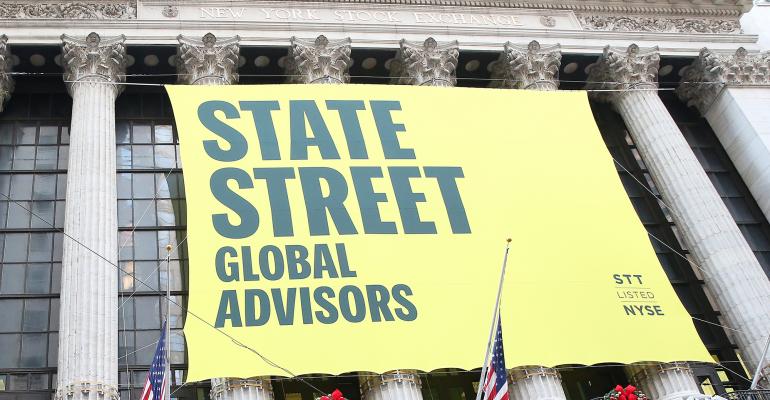Last week, the battle to offer ever-cheaper ETFs intensified, as the second- and third-largest asset managers reduced the fees on existing products in moves meant to deepen the appeal to cost-conscious investors. While we think the fee reductions by Vanguard and SSGA are good for existing and potential shareholders, not all cost reductions should be treated equally.
CFRA has long held that a low expense ratio matters and we incorporate this metric into our ETF ratings, just as we do for our mutual fund ratings. Yet, we also focus on what’s inside an ETF, because it is the stocks and bonds that a fund holds that will drive the market value higher or lower, regardless of how much the wrapper costs.
In a thematic research article “Crashing the ETF Party With Free Funds” CFRA recently covered the big news that fintech firm SoFi plans to launch what would be the only two ETFs with no fee, due to a fee waiver. Yet, those ETFs do not yet exist and are likely to need time to gain scale. However, continuing an ongoing trend, Vanguard and SSGA cut fees on existing products that already have assets in them, forgoing existing revenue.
On Tuesday last week, Vanguard disclosed in its prospectus filings that the fees for 10 of its more popular ETFs had been reduced. Then, through reading the annual reports CFRA identified three other widely held ETFs that would be incorporating lower expense ratios, making them cheaper than other strategies offered by iShares, SSGA and Schwab. However, the relative appeal of these fund reductions is not uniform.
The first set of Vanguard reductions was on ETFs that collectively had approximately $175 billion in assets and all involved cuts of one or two basis points and made the Vanguard offering cheaper than a similarly sounding and popular competitor.
For example, the $63 billion Vanguard FTSE Emerging Markets ETF (VWO) now charges a net expense ratio of 0.12 percent, down from 0.14 percent, for diversified exposure to developing markets such as China, Taiwan and India. That is cheaper than the $59 billion iShares Core MSCI Emerging Markets (IEMG), which charges 2 basis points more (for now). But the slightly more expensive IEMG outperformed VWO in the three-year period ended February 2019 by 76 basis points (14.45 percent to 13.69 percent).
A major reason why there’s been and likely will continue to be a performance gap between VWO and IEMG greater than the difference in the fees is the country exposure. While IEMG is invested in China, Taiwan and India, the ETF also has a 14 percent weighting in South Korea and major stake in Samsung; neither that stock nor the country is represented in VWO as it tracks a different index.
Meanwhile, the $103 billion Vanguard 500 Index ETF (VOO) tracks the same prominent benchmark as iShares Core S&P 500 (IVV) and SPDR S&P 500 (SPY 280 Overweight) and so the expense ratio reduction from 0.04 percent to 0.03 percent is more straightforward. IVV is now one basis point more expensive (0.04 percent), while SPY is six (0.09 percent).
As of February, the three-year record differential between these three ETFs was equal to the fee, with SPY lagging by exactly six basis points (14.83 percent vs. 14.88 percent for both VOO and IVV). When the holdings are the same, it is easy to choose the cheaper option.
Though VWO and VOO are among the largest ETFs available, SSGA's high-yield ETF that is due for a fee cut on April 1 has just $71 million in assets. SPDR ICE B of A ML Crossover Corporate Bond ETF (CJNK) will soon charge 0.15 percent, down from 0.30 percent (0.40 percent gross) and, equally importantly, track a new index. Currently, CJNK has approximately half of its assets in bonds rated low-investment grade (A and BBB) and the rest in speculative-grade bonds (BB and B), according to CFRA Research. This is by design as the index it tracks bleeds between the investment-grade and high-yield investment styles.
However, the ETF will soon be known as SPDR ICE B of A ML Broad High Yield Index ETF and maintain the CJNK ticker. As CJNK’s new name suggests, the new index will be firmly within the high-yield realm with BB, B and CCC exposure.
CJNK will be cheaper than SSGA’s own $8 billion SPDR Barclays High Yield Corporate Bond (JNK) that charges 0.40 percent and the $2.6 billion X-Trackers USD High Yield Corporate Bond (HYLB) available for 0.20 percent.
HYLB launched in late 2016, so looking to just the past year ended February, there are differences between the returns of these three ETFs. While HYLB was ahead of JNK by approximately 70 basis points, the gap between the X-Tracker and CJNK was 190 basis points. Though the fee played a role, both JNK and HYLB focused on bonds rated BB and below that were in favor amid a risk on environment.
As investors look to consider CJNK following the fee cut and name change, we think a look inside is more important than just focusing on past performance.
Don’t miss CFRA’s webinar on March 5 at 11 a.m.ET as we discuss how to sort through the growing ETF universe. We will cover the above and many other case studies where exposure matters. Register by clicking here.
Todd Rosenbluth is the director of ETF and mutual fund research at CFRA. Learn more about CFRA's ETF research here.

